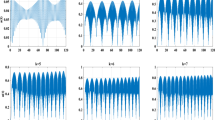The article examines the interaction of a few-cycle optical pulse with an optically thin transparent and/or absorbing layer. The reflection of light energy is shown to be nonmonotone depending on layer thickness. The interaction of a few-cycle light pulse with the layer may produce total transparency of the layer for pulses of a certain carrier frequency. Absorption in the layer also has a nonmonotone effect on both reflected and transmitted light energy. The energy absorbed in the layer may decrease with increasing layer absorption coefficient due to the increase of energy reflection from the layer. The layer thickness when the reflected energy is maximized depends on the electrical conductivity of the medium. Under certain conditions, the interaction of the light pulse with the optically thin plate may essentially alter the spectrum of the reflected pulse and, in particular, its absolute phase, which depends on plate thickness. This property can be exploited in applications to generate few-cycle pulses with the required absolute phase.
Similar content being viewed by others
References
Y. R. Shen, The Principles of Nonlinear Optics [Russian translation], MIR, Moscow (1989).
S. M. Gladkov, and N. I. Koroteev, “Quasi-resonance nonlinear optical processes with the participation of excited and ionized atoms,” UFN, 160, No. 7, 105–145 (1990).
G. G. Paulus, F. Grasbon, H. Walther, P. Villoresi, M. Nisoli, S. Stagira, E. Priori, and S. De Silvestri, “Absolute-phase phenomena in photoionization with few-cycle laser pulses,” Nature, 414, 182–184 (2001).
E. V. Vanin, M. S. Dauner, A. V. Kim, and A. M. Sergeev, “Excitation of supershort radiation harmonic bursts during gas ionization by a strong optical pulse,” Pis’ma v ZhETF, 58, No. 12, 964–969 (1993).
P. Dombi, A. Apolonski, Ch. Lemell, G. G. Paulus, and others, “Direct measurement and analysis of the carrier-envelope phase in light pulses approaching the single-cycle regime,” New Journal of Physics, 2004, Volume 6, Paper Number 39 (2004)
D. Hovhannisyan and K. Stepanyan, “Computational modeling of supercontinuum generation in fused silica by a femtosecond laser pulse of a few optical cycles,” Microwave and Optical Technology Letters, 42, No. 1, 60–64 (2004).
F. Zhong, H. Jiang, and Q. Gong, “Tuning the frequency of few-cycle femtosecond laser pulses by molecular phase modulation,” Optics Express, 17, No. 3, 1472–1477 (2009).
T. Brabec and F. Krausz, “Intense few-cycle laser fields: frontiers of nonlinear optics,” Rev. Mod. Phys., 72, 545–591 (2000).
D. K. Skripov and V. A. Trofimov, “The dependence of the spectrum of a femtosecond pulse on its absolute phase during propagation in a nonlinear medium,” Pis’ma v ZhETF, 27, No. 14, 6–15 (2001).
D. K. Skripov and V. A. Trofimov, “Hysteresis behavior of some spectral components of a femtosecond pulse during transmission through a nonlinear layer,” ZhTF, 73, No. 3, 69–74 (2003).
D. K. Skripov and V. A. Trofimov, “Hysteresis behavior of some spectral components of a femtosecond pulse during propagation in a nonlinear medium,” ZhTF, 74, No. 2, 77–82 (2004).
D. K. Skripov and V. A. Trofimov, “Applicability of the Duffing model to describe the propagation of femtosecond light pulses in nonlinear media,” Trudy UNTs Fiber-Optics Materials and Devices, No. 3, 83–92 (2000).
D. K. Skripov and V. A. Trofimov, “Formation of a high-frequency subpulse during propagation of a femtosecond pulse in a medium with potential saturation,” Optika i Spektroskopiya, 95, No. 2, 347–359 (2003).
V. A. Trofimov and V. N. Safonov, “Dependence of harmonic generation efficiency on absolute phase of femtosecond pulse,” Proceedings of SPIE, Vol. 6028, 602806 (2005).
V. N. Safonov and V. A. Trofimov, “The effect of the absolute phase of a few-cycle light pulse on third harmonic generation in an otpically thin layer,” Pis’ma v ZhETF, 32, No. 11, 37–43 (2006).
V. N. Safonov and V. A. Trofimov, “Parametric generation of even polarization harmonics in a cubically nonlinear layer,” Optika i Spektroskopiya, 100, No. 6, 1008–1016 (2006).
V. A. Trofimov and I. V. Mishanov, “Reflection and propagation of laser pulse with a few cycles in medium with time-dependent dielectric permittivity,” in: Proceedings of SPIE, Volume 8772, 877211 (2013).
Y. Xiao,Y., D. N. Maywar, and G. P. Agraval, “New approach to pulse propagation in nonlinear dispersive optical media,” JOSA B, 29, No. 10, 2958–2963 (2012).
Y. Xiao,Y., G. P. Agraval and D. N. Maywar, “Spectral and temporal changes of optical pulses propagating through time-varying linear media,” Optics Letters, 36, No. 4, 505–507 (2011).
A. Akhmeteli, Efficient Heating of Thin Cylindrical Targets by Broad Electromagnetic Beams I, ArXiv: physics [physics.plasmph]. 0405091v1 (2004).
A. Akhmeteli, Efficient Heating of Thin Cylindrical Targets by Broad Electromagnetic Beams II, ArXiv: physics [physics.plasmph]. 0611169v1 (2006).
A. Akhmeteli, N. G. Kokodiy, B. V. Safronov, V. P. Balkashin, I. A. Priz, and A. S. Tarasevich, Efficient Non-Resonant Microwave Absorption in Thin Cylindrical Targets: Experimental Evidence, ArHiv: physics. 11091626v2 (2011).
R. Joseph, S. Hagness, and A. Taflove, “Direct time integration of Maxwell’s equations in linear dispersive media with absorption for scattering and propagation of femtosecond electromagnetic pulses,” Optics Letters, 16, No. 18, 1412–1414 (1991).
P. Goorjian and A. Taflove, “Direct time integration of Maxwell’s equations in nonlinear dispersive media for propagation and scattering of femtosecond electromagnetic solitons,” Optics Letters, 17, No. 3, 180–182 (1992).
A. Taflove, Advances in Computational Electrodynamics: The Finite-Difference Time-Domain Method, Artech House, Boston (1998).
K. S. Yee, “Numerical solution of initial boundary value problems involving Maxwell's equations in isotropic media,” IEEE Transactions on Antennas and Propagation, 14, No. 3, 302–307 (1966).
Author information
Authors and Affiliations
Corresponding author
Additional information
Translated from Prikladnaya Matematika i Informatika, No. 47, 2014, pp. 5–24.
Rights and permissions
About this article
Cite this article
Komarova, E.S., Trofimov, V.A. & Fedotov, M.V. Transmission of a few-Cycle Femtosecond Pulse Through an Optically Thin Plate. Comput Math Model 26, 467–483 (2015). https://doi.org/10.1007/s10598-015-9285-y
Published:
Issue Date:
DOI: https://doi.org/10.1007/s10598-015-9285-y




